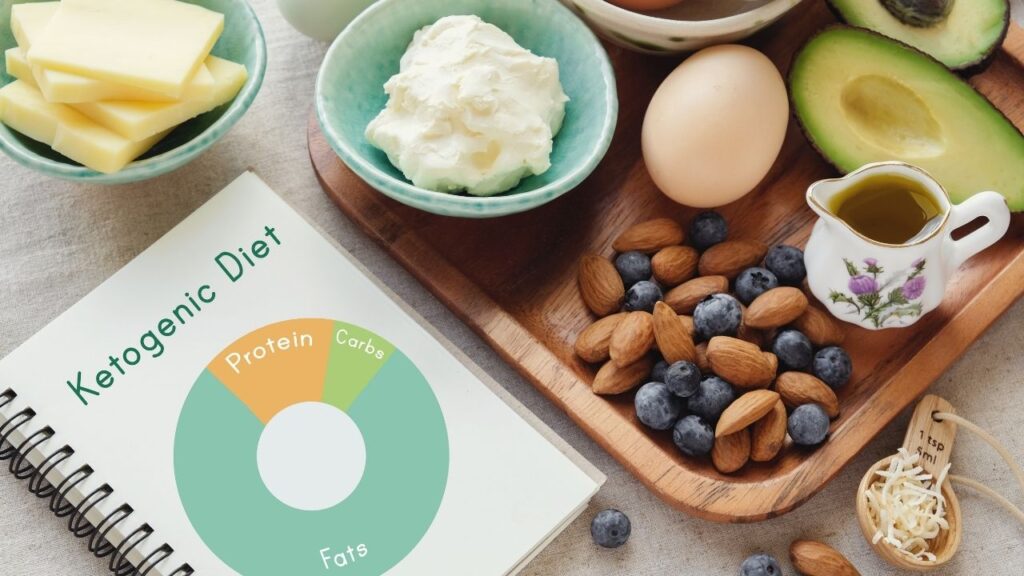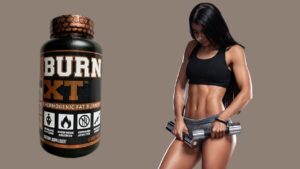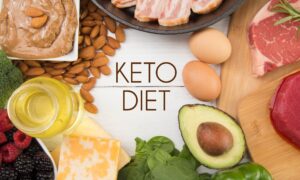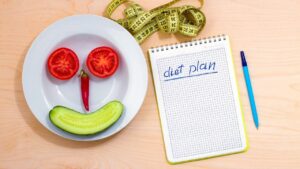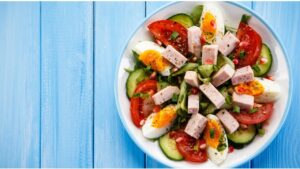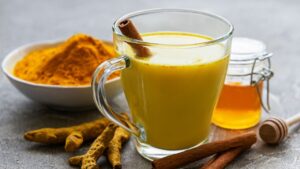Finding yourself confused by the endless promotion of weight-loss strategies and diet plans? Maybe we can help you to answer all your queries about the Ketogenic Diet. We will give you a complete Keto Diet meal Plan for Beginners here. Read also 7 Days Gm Diet Plan For Weight Loss.
What is Keto Diet?
To achieve positive results, this diet has to be very low in carbohydrates, high in dietary fat, and include a moderate amount of proteins. This is the reason this diet is called a ketogenic diet as the body primarily is rich in ketones because of this diet.
The ketogenic diet is very low-carbs like Bread, pasta, potatoes, rice, etc, and high-fat like Meat, eggs, butter, olive oil, avocados.
This diet is not something very new but is somewhere close to other popular diets like :
- Strict low-carb diet
- Gluten-free diet
- Paleo diet
- Atkins diet
How This Keto Diets Works?
Now what happens is, whenever there is reduction in carbohydrates in diet, it puts your body into a state of metabolic ketosis. This leads to efficient burning of fat and production of energy. This creates a state where carbs are not used up for energy production. Fats are broken down in liver and ketone bodies are formed which are the alternate source of energy.
During fasting, or when very little carbohydrate is eaten, the body first pulls stored glucose from the liver and temporarily breaks down muscle to release glucose. If this continues for 3-4 days and stored glucose is fully depleted, blood levels of a hormone called insulin decrease. The body begins to use fat as its primary fuel. This helps the body in becoming a fat burning machine.
Benefits of Keto Diet
In the 19th century, the ketogenic diet was commonly used to control diabetes. In 1920 it was introduced as an effective treatment for epilepsy in children in whom medication was ineffective. The ketogenic diet has also been tested and used for cancer, diabetes, PCOS, and Alzheimer’s disease.
However, this diet is gaining considerable attention as a potential weight-loss strategy due to the low-carb diet craze. It has started in the 1970s with the Atkins diet.
Atkins Diet is a very low-carbohydrate, high-protein diet, which was a commercial success and popularized low-carb diets to a new level. Today, other low-carb diets including the Paleo, South Beach, and Dukan diets are all high in protein but moderate in fat.
In contrast, the ketogenic diet is distinctive for its exceptionally high-fat content, typically 70% to 80%, though with only a moderate intake of protein. The best thing about this diet is that it helps in weight loss without hunger and you will never run out of energy also.
This diet not only helps in weight loss for a short period of time but youngsters can also make this diet as a part of their daily routine.
Other Benefits of Keto Diet Than Weight Loss
- Lesser acne
- In treating brain cancer
- Epilepsy
- Fewer migraine attacks
- Control blood sugar and reverse type 2 diabetes
- Normalized blood pressure
- Improved health markers
- Increased physical endurance
- Better mental performance and constant energy
Keto Diet Meal Plan For Beginners
A well-formulated ketogenic diet, besides limiting carbohydrates, also limits protein intake. It limits protein intake moderately to less than 1g/lb. body weight. Unless individuals are performing heavy exercise involving weight training when the protein intake can be increased to 1.5g/lb. body weight.
This is to prevent the endogenous production of glucose in the body. However, it does not restrict fat or overall daily calories. People on a ketogenic diet initially experience rapid weight loss up to 10 lbs. in 2 weeks or less.
This diet has a diuretic effect, and some early weight loss is due to water weight loss followed by a fat loss. As a nutritional ketosis state sustains, hunger pangs subside, and an overall reduction in caloric intake helps to further weight loss.
Generally, popular ketogenic resources suggest an average of 70-80% fat from total daily calories, 5-10% carbohydrate, and 10-20% protein. For a 2000-calorie diet, this translates to about 165 grams fat, 40 grams carbohydrate, and 75 grams protein.
The protein amount on the ketogenic diet is kept moderate in comparison with other low-carb high-protein diets, because eating too much protein can prevent ketosis. Many versions of ketogenic diets exist, but all ban carb-rich foods.
Some of these foods may be obvious: Starches from both refined and whole grains like breads, cereals, pasta, rice, and cookies; potatoes, corn, and other starchy vegetables; and fruit juices. Some that may not be so obvious are beans, legumes, and most fruits.
Most ketogenic plans allow foods high in saturated fat, such as fatty cuts of meat, processed meats, lard, and butter, as well as sources of unsaturated fats, such as nuts, seeds, avocados, plant oils, and oily fish. Depending on your source of information, ketogenic food lists may vary and even conflict.
Food Products that can be consumed in a ketogenic diet
Carbohydrates
If you are on a keto diet, you must eat between 20 to 50 grams of carbs per day to maintain the state of ‘ketosis’. In this case, you must remember to eat foods that are high-fiber, juicy fruits, and vegetables for natural hydration.
Your best options are leafy greens, pepper, and stalk shaped vegetables. You must avoid foods like root veggies; potatoes, carrots, etc.
Veggies that you can eat include:
- Tomatoes
- Eggplant
- Broccoli
- Cauliflower
- Spinach
- Green Beans
- Cucumber
- Bell peppers
- Zucchini
- Celery
Proteins
There should be enough protein in your diet to build muscle cells and burn calories. However, too much or too less of protein intake can sabotage your goals. Very less protein can lead to a reduction of overall muscle mass and the number of calories you burn at rest.
Excess of protein in your body will be converted to carbs for energy. Yoghurt, eggs and cheese are some foods that will provide the required protein to you.
Take a balanced intake of protein from these foods:
- Chicken, dark meat if possible
- Salmon
- Sardines
- Tuna
- Shrimp
- Eggs
- Natural cheeses
- Unsweetened, whole milk plain Greek yoghurt
- Whole milk ricotta cheese
- Whole milk cottage cheese
Fats
Fats are 70 to 80% of the calories that you require while on keto. It is essential to consume a higher ratio of unsaturated fats (flaxseed, olive, nuts) to saturated fats (red meat, palm oil, butter).
It is best to eat fat-rich food that isn’t going to block your arteries.
- Olive oil
- Avocado oil
- Olives
- Avocados
- Flaxseeds, Chia seeds
- Pumpkin seeds
- Sesame seeds
- Coconuts
- Nuts
- Natural, no-sugar-added nut butter
What you Cannot eat on keto?

- Beans, peas, lentils, and peanuts
- Grains, such as rice, pasta, and oatmeal
- Low-fat dairy products
- Added sugars and sweeteners, and soda
- Most fruits, except for lemons, limes, tomatoes, and small portions of berries
- Starchy vegetables, including corn, potatoes, and peas
- Trans fats, such as margarine or other hydrogenated fats 8. Most alcohols, including wine, beer, and sweetened cocktails.
If You Find this article “Keto Diet Meal Plan for Beginners”, please share it with your friends. Also, check my Instagram page @beautifulyoufit for more fitness and weight loss tips.

Seafood. Fish and shellfish are very keto-friendly foods, Low-carb vegetables, Cheese, Avocados, Meat and poultry, Eggs, Coconut oil, Plain Greek yogurt, and cottage cheese
This keto diet is high in saturated fat, This can increase your risk of heart related diseases.
Banana and grapes are very high in carbs so they should be avoided while on keto diet.
Yes, you can take milk while on a keto diet but it should be in a moderate quantity as A single cup of whole milk has almost 12 grams of carbohydrates, which takes up nearly half of some dieters’ daily carb allowance.

